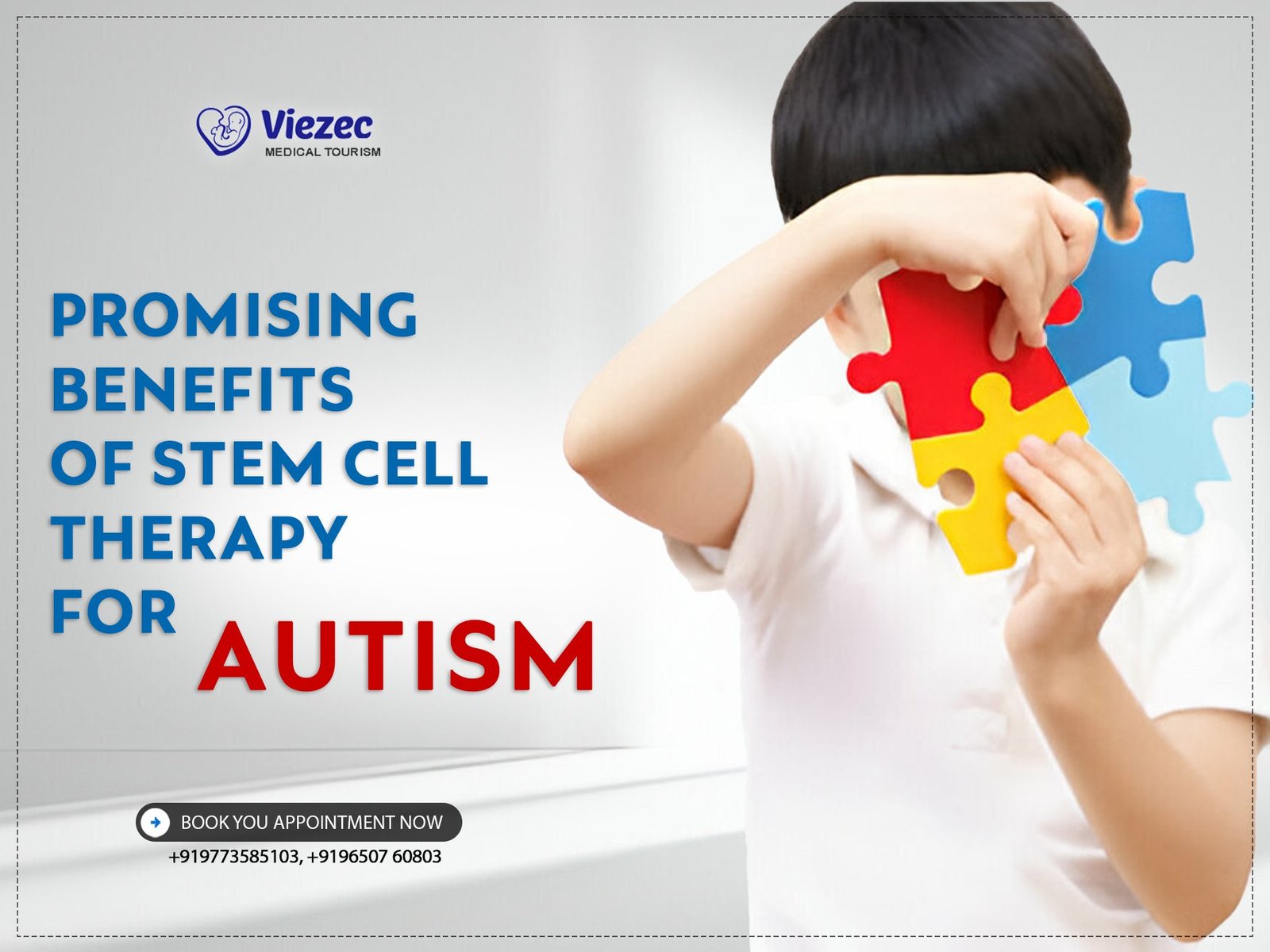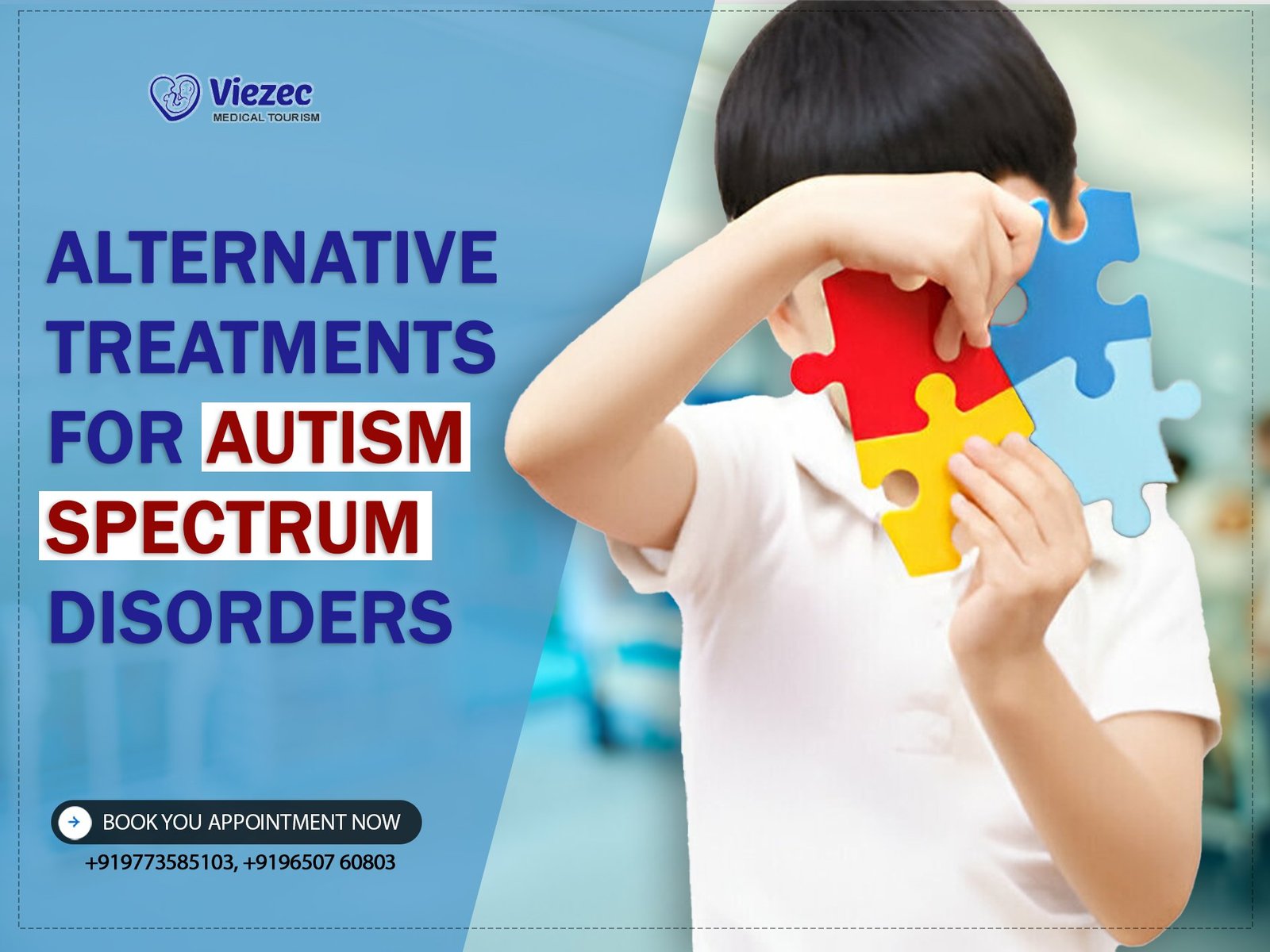Stem cell therapy has emerged as a promising treatment avenue for autism spectrum disorder (ASD), offering potential benefits that conventional therapies often cannot match. This article explores the multifaceted advantages of using stem cells to address the complex neurological and behavioral challenges associated with autism.
Definition and Overview
Autism spectrum disorder is characterized by a range of neurodevelopmental conditions affecting social interaction, communication skills, and behavior. Traditional treatments focus on symptom management rather than addressing underlying biological mechanisms. Stem cell therapy, however, aims to intervene at a cellular level, potentially promoting repair and regeneration in the brain.
Historical Context and Development
The application of stem cells in neurological disorders like autism traces back to early research on neural stem cells and their therapeutic potential. Over the decades, advancements in stem cell technology have paved the way for more targeted therapies, with ongoing clinical trials demonstrating varying degrees of success.
Current State of Research
Current research into stem cell therapy for autism is diverse, encompassing studies on different types of stem cells, delivery methods, and patient outcomes. While some trials have shown promising results, the field remains largely experimental, with researchers continuously refining techniques to optimize therapeutic benefits.
Mechanisms of Stem Cell Therapy
Stem cells possess unique properties that make them attractive for treating autism spectrum disorder, primarily due to their ability to differentiate into various cell types and modulate the immune response and inflammation within the nervous system.
Types of Stem Cells Used
Stem cells used in autism therapy include embryonic stem cells, adult stem cells, and induced pluripotent stem cells (iPSCs), each with distinct advantages and challenges in terms of safety, efficacy, and ethical considerations.
Embryonic Stem Cells
Embryonic stem cells are pluripotent cells derived from embryos and can differentiate into any cell type in the body, offering significant potential for repairing damaged neural tissues.
Adult Stem Cells
Adult stem cells, found in various tissues such as bone marrow and adipose tissue, are multipotent and can differentiate into a limited range of cell types. They are less controversial than embryonic stem cells and have been explored for their regenerative properties in neurodevelopmental disorders.
Induced Pluripotent Stem Cells (iPSCs)
iPSCs are generated by reprogramming adult cells to revert to a pluripotent state, resembling embryonic stem cells in their differentiation potential. They hold promise for personalized therapies, as they can be derived from the patient’s own cells, minimizing immune rejection.
How Stem Cells Interact with the Nervous System
Once administered, stem cells can migrate to areas of injury or dysfunction within the nervous system. They may integrate into existing neural circuits, release neurotrophic factors, and modulate the local environment to support neuronal survival and function.
Potential for Repair and Regeneration
One of the primary mechanisms of stem cell therapy in autism is the potential for neuroregeneration. Stem cells may promote the repair of damaged neural circuits, enhance synaptic connectivity, and restore normal brain function, leading to improvements in cognitive and behavioral outcomes.
Improvements in Social Behavior
Stem cell therapy holds promise for enhancing social behavior in individuals with autism spectrum disorder, addressing core deficits in communication and social interaction skills.
Enhanced Communication Skills
Communication difficulties are hallmark symptoms of autism. Stem cell therapy may facilitate improvements in verbal and non-verbal communication abilities, enabling individuals to express themselves more effectively and engage meaningfully with others.
Increased Social Engagement
Social isolation is common among individuals with autism. Stem cells could potentially enhance social motivation and interpersonal interactions, fostering connections with peers, family members, and caregivers.
Reduction in Social Anxiety
Many individuals with autism experience heightened social anxiety in unfamiliar or overwhelming social situations. Stem cell therapy may mitigate these anxieties by promoting neural pathways associated with emotional regulation and social cognition.
Cognitive Function Enhancement
Cognitive impairments in autism, such as difficulties with memory, attention, and problem-solving, can significantly impact daily functioning. Stem cell therapy aims to enhance cognitive abilities through various neurobiological mechanisms.
Memory Improvement
Stem cells may support memory consolidation and retrieval processes by influencing hippocampal neurogenesis and synaptic plasticity, potentially leading to improvements in both short-term and long-term memory.
Better Attention Span and Focus
Attention deficits are common in autism. Stem cell therapy might enhance attentional control mechanisms, such as sustained attention and selective attention, contributing to improved focus and task completion.
Enhanced Problem-Solving Abilities
Individuals with autism often struggle with abstract thinking and problem-solving. Stem cells could promote cognitive flexibility and reasoning skills, empowering individuals to navigate challenges and adapt to changing environments more effectively.
Reduction in Repetitive Behaviors
Repetitive behaviors, including stereotypical movements and ritualistic routines, are core symptoms of autism. Stem cell therapy offers potential therapeutic benefits by targeting the neural circuits underlying these behaviors.
Decrease in Stereotypical Movements
Stereotypies, such as hand-flapping or rocking, may diminish with stem cell therapy as neural networks implicated in repetitive behaviors are modulated, potentially reducing the frequency and intensity of these movements.
Lower Frequency of Ritualistic Behaviors
Ritualistic behaviors serve as coping mechanisms for individuals with autism but can interfere with daily functioning. Stem cells may help reorganize neural pathways associated with these behaviors, promoting more adaptive and flexible routines.
Improved Flexibility in Daily Activities
Enhanced neural plasticity and synaptic connectivity facilitated by stem cell therapy could lead to greater adaptability in daily routines and activities, allowing individuals with autism to explore new interests and engage in a wider range of experiences.
Behavioral Improvements
Behavioral challenges such as aggression, impulsivity, and emotional dysregulation can significantly impact quality of life for individuals with autism and their families. Stem cell therapy aims to modulate these behaviors through neurobiological interventions.
Reduction in Aggressive Behaviors
Aggression and irritability are common in autism and can stem from sensory sensitivities or communication difficulties. Stem cell therapy may mitigate these behaviors by addressing underlying neural dysfunction and enhancing emotional regulation.
Lowered Hyperactivity Levels
Hyperactivity and restlessness are observed in some individuals with autism. Stem cells could potentially stabilize neural circuits involved in motor control and arousal, leading to reduced hyperactive behaviors and improved impulse control.
Enhanced Emotional Regulation
Emotional dysregulation, characterized by rapid mood swings or difficulty managing emotions, can be challenging for individuals with autism. Stem cell therapy may promote emotional stability by modulating neurotransmitter systems and improving self-regulation skills.
Enhancement of Sensory Processing
Sensory processing difficulties are prevalent among individuals with autism, affecting their ability to interpret and respond to sensory stimuli. Stem cell therapy offers potential improvements in sensory integration and tolerance.
Improved Sensory Integration
Stem cells may enhance the brain’s ability to process and integrate sensory information from the environment, reducing sensory overload and improving overall sensory processing capabilities.
Reduction in Sensory Overload
Hyperreactivity to sensory stimuli can overwhelm individuals with autism, leading to anxiety and avoidance behaviors. Stem cell therapy might normalize sensory thresholds and increase tolerance to sensory input, promoting greater comfort in varied environments.
Better Tolerance to Environmental Stimuli
By modulating neural circuits involved in sensory perception, stem cells could help individuals with autism adapt more effectively to changes in their surroundings, enhancing their participation in social, educational, and recreational activities.
Biological and Physiological Benefits
Beyond behavioral improvements, stem cell therapy for autism offers potential biological and physiological benefits that contribute to overall health and well-being.
Anti-inflammatory Effects
Chronic inflammation may contribute to neurodevelopmental disorders like autism. Stem cells possess anti-inflammatory properties that could mitigate neuroinflammation, potentially protecting neural tissues and supporting optimal brain function.
Immune System Modulation
Dysregulated immune responses have been implicated in autism pathology. Stem cell therapy may modulate immune function, promoting immune tolerance and reducing autoimmune reactions that could exacerbate neurological symptoms.
Neuroprotective Properties
Stem cells secrete neurotrophic factors and other molecules that support neuronal survival and repair. By providing a neuroprotective environment, stem cell therapy may safeguard existing neurons and promote the growth of new neural connections.
Personalized Treatment Approaches
Effective implementation of stem cell therapy in autism requires personalized treatment strategies tailored to each individual’s unique needs and characteristics.
Tailoring Therapy to Individual Needs
Personalized medicine approaches consider factors such as genetic predispositions, symptom severity, and responsiveness to previous treatments when designing stem cell therapy protocols for autism.
Combining Stem Cell Therapy with Other Treatments
Integrated treatment plans that combine stem cell therapy with behavioral interventions, speech therapy, occupational therapy, and pharmacotherapy may yield synergistic benefits, addressing multiple aspects of autism spectrum disorder simultaneously.
Monitoring and Adjusting Treatment Plans
Regular monitoring of patient progress and response to stem cell therapy is essential for optimizing outcomes. Adjustments to treatment plans based on ongoing assessments ensure that therapeutic interventions remain effective and adaptive to evolving needs.
Frequently Asked Questions
Is stem cell therapy safe for children with autism?
Stem cell therapy for autism is generally considered safe, with research focusing on optimizing safety protocols and monitoring long-term effects.
What are the ethical considerations of using stem cells in autism treatment?
Ethical considerations include the sourcing of stem cells, informed consent, and ensuring transparency in research and clinical practices.
How long does it take to see improvements after stem cell therapy?
The timeline for improvements varies among individuals, with some noticing changes within months, while others may experience gradual enhancements over a longer period.
Is stem cell therapy covered by insurance for autism treatment?
Coverage for stem cell therapy varies by location and insurance provider, often requiring documentation of medical necessity and adherence to regulatory guidelines.
For more detailed information on stem cell therapy for autism and to explore treatment options, visit our website or contact our specialists today. Discover how stem cell innovations are transforming the landscape of autism treatment and improving the lives of individuals and families worldwide.









